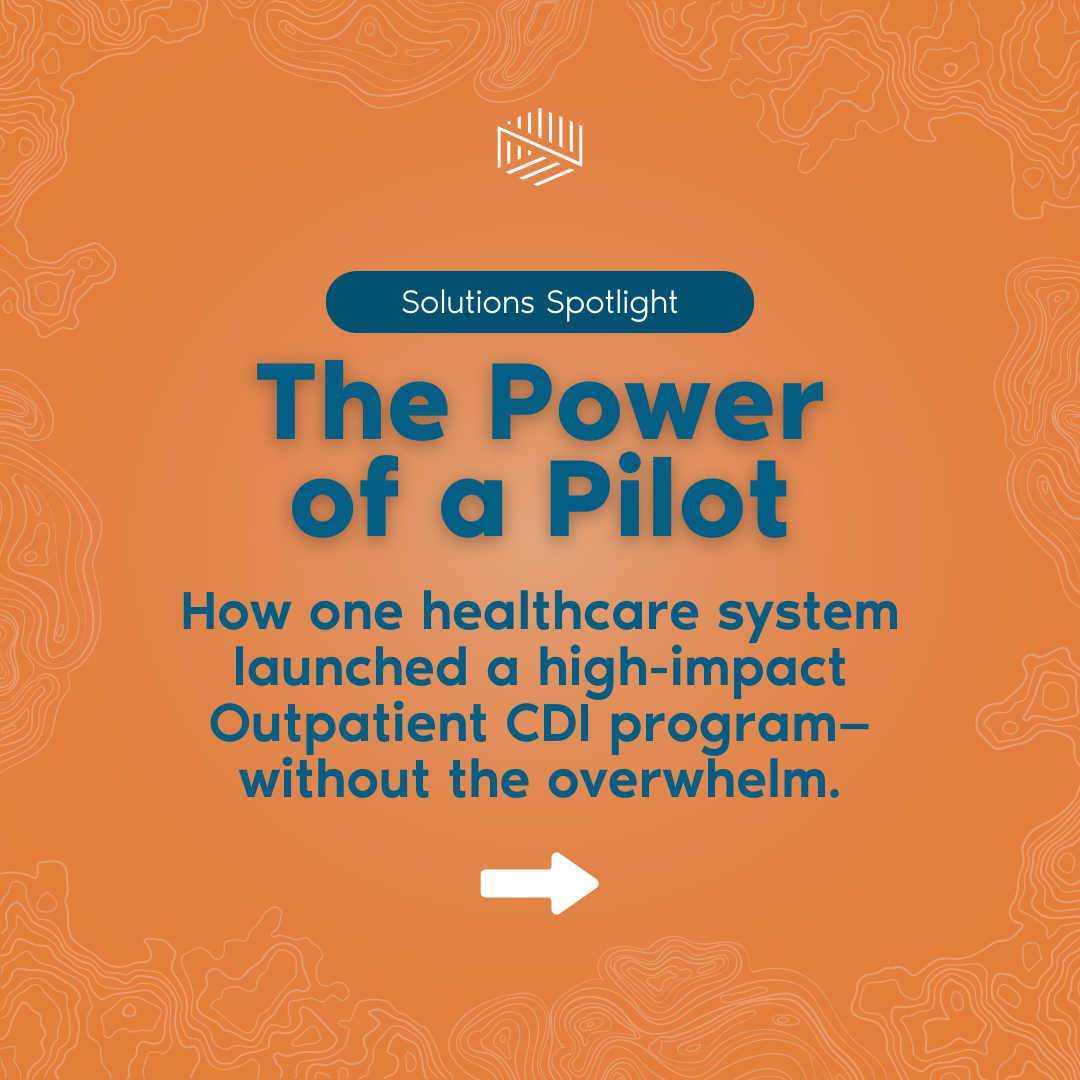
Implementing an outpatient CDI program across a large integrated healthcare organization with nearly 80 physician practices and a half-dozen urgent care and community medical centers, all at once, is a daunting task.
Too much for one partner organization to bite off.
We agreed, and so in June 2024 got them off the runway with a manageable pilot program.
The rollout
Our work included:
- Developing a CDI program project plan including roadmap, steering committee, and implementation playbook
- Targeting six clinics and 42 total providers
- Reviewing 200 patient records to assess current documentation gaps
- Educating providers on the “why” and documentation specificity and accuracy
- Staffing 4 FTEs to provide CDI services, including a CDI supervisor and 3 CDI specialists
- Creating a performance dashboard
Norwood’s CDI team conducted pre-visit reviews for a segment of the population to identify new suspected conditions for clinicians to evaluate at the point of care. It also recommended removal of conditions no longer valid.
We tracked metrics on a monthly basis and dissected the results to drive performance at the site and provider level.
The results
In every metric patients with a CDI review and/or provider education outperformed those outside the pilot. These include:
- Severity improvement: 5.3% RAF score increase for all pilot practices (education only)
- RAF capture: Patients with a CDI review had 10.3% more RAF captured per patient than those without a review; average total RAF is 0.08 points higher than the overall population
- RAF closure: CDI reviewed patients had 64% less RAF gap per patient to be captured year-over-year than those without a review
Additional recommendations
While the pilot resulted in significant improvements in capture of patient acuity we also identified additional areas of improvement. These included:
- Improving Response Rates: Focus on education and sharing performance to drive up response rates. If not, the CDI team should leverage leadership to reinforce the value and expectations.
- Driving Patient Scheduling: Perform outreach to patients with gaps greater than 1 to pull them into the office. In this instance 15% of patients made up more than 60% of the outstanding RAF.
- Implementing Post-Visit Coding: Consider post-visit, pre-bill coding to further drive capture of conditions documented while also minimizing the risk of over-captured conditions.
Next steps
Our partner is now considering expanding its OP CDI program to additional clinics and hiring additional CDI staff.
Overall it was an incredibly successful launch; the pilot overperformed with demonstrable ROI, minimal disruption, and less up-front cost. And provided a ready blueprint for future expansion.
You could say our pilot landed the plane after a successful mission.
Need to launch or grow your own OP CDI program? We can help. Contact us at consulting@norwood.com.
Related News & Insights
Corrected Medicare Shared Savings Program results are out; where does your organization fall? And are they real?
By Jason Jobes, SVP Solutions, Norwood Breaking CMS news to report… the revised MSSP results are out….
Three tips for making outpatient CDI impact—the most important being, just do it
By Brian Murphy, Norwood Solutions The latest episode of Off the Record dropped last week and…


